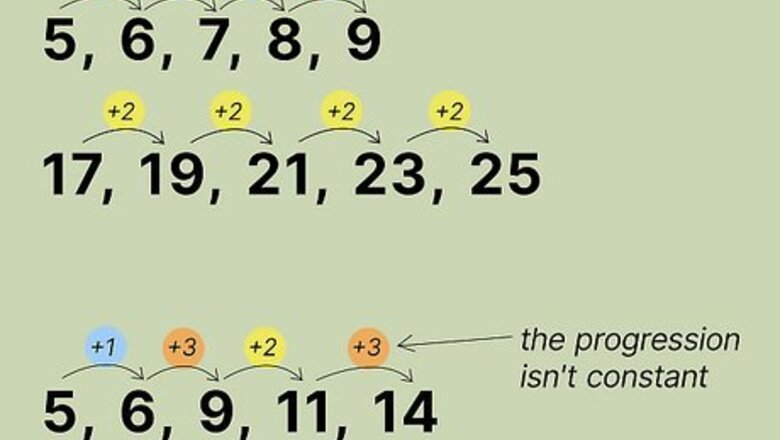
views
n
{\displaystyle n}
can be a helpful skill, whether you’re working on math homework or preparing for a standardized test. Since integers are whole numbers, there’s no need to worry about fractions or decimals—just decide which formula will help you answer your problem best. Then, plug the integer from the problem into the
n
{\displaystyle n}
place and solve the equation. Still confused? Follow the steps and examples below.
Finding the Sum of Consecutive Integers
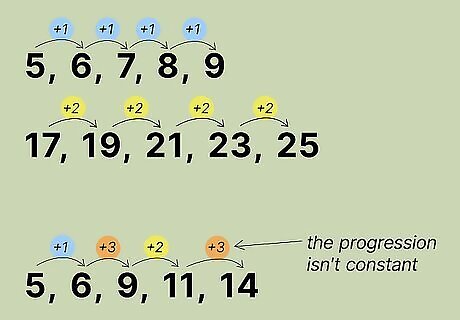
Identify the arithmetic sequence. Look at the range of numbers you're trying to add together. If you'd like to use a formula to sum the integers, ensure that the numbers progress in a constant amount. For example, 5, 6, 7, 8, 9 is a series, and so is 17, 19, 21, 23, 25. You couldn't use 5, 6, 9, 11, 14 because the progression isn't constant.
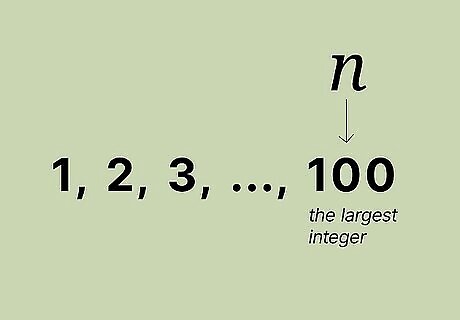
Define n {\displaystyle n} n for your sequence. To use a formula to find the sum of 1 to n {\displaystyle n} n, choose the largest integer to be n {\displaystyle n} n. For example, if you try adding all the integers from 1 to 100, n {\displaystyle n} n will be 100 because it's the largest integer in the sequence. As a reminder, integers are whole numbers, so n {\displaystyle n} n cannot be a decimal, fraction, or negative number.
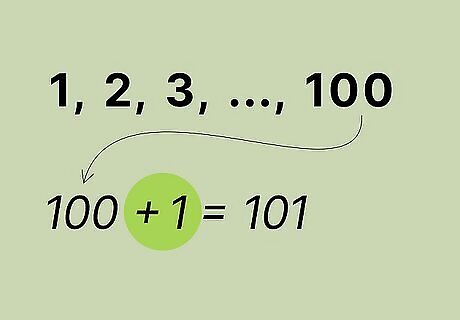
Identify how many integers you're adding. To sum the integers from your starting number to n {\displaystyle n} n, determine how many terms you add. For example, if you're adding the first 200 integers, you'll have 200 plus 1 to equal 201 integers. If you're adding the first integers from 1 to 12, you'll have 12 plus 1 to equal 13 terms.
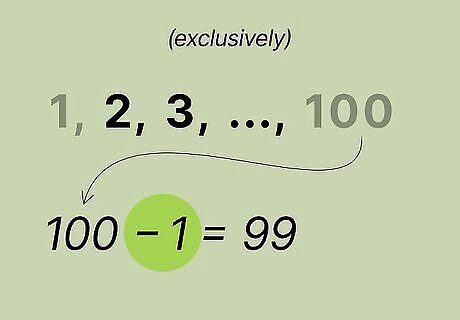
Decide if you're adding exclusively. You may be asked to find the sum of a range of integers between two integers. If you're summing exclusively, you'll need to subtract 1 from your n {\displaystyle n} n. For example, if you're finding the sum of the integers from 1 to 100 exclusively, subtract 1 from 100 to get 99.
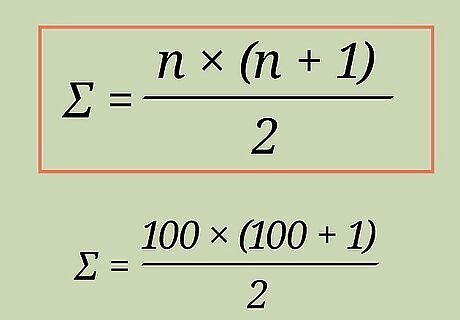
Define your formula for consecutive integers. Once you've defined n {\displaystyle n} n as the largest integer you're adding, plug the number into the formula to sum consecutive integers: sum = n {\displaystyle n} n∗( n {\displaystyle n} n+1)/2. For example, if you're summing the first 100 integers, plug 100 into n {\displaystyle n} n to get 100∗(100+1)/2. If you're finding the first 20 integers, use 20 for n {\displaystyle n} n. Work 20∗(20+1)/2 to get 420/2. Your answer will be 210.
Finding the Sum of Other Integers
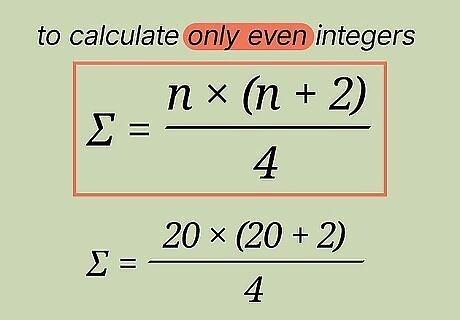
Set up a formula to calculate only even integers. If the problem asks you to find the sum of only the even integers in a sequence starting with 1, you'll need to use a different formula. Plug your highest integer into n {\displaystyle n} n so: sum = n {\displaystyle n} n∗( n {\displaystyle n} n+2)/4. For example, if the problem asks you to find the sum of even integers from 1 to 20, use 20 as n {\displaystyle n} n. Your formula will be 20∗22/4.
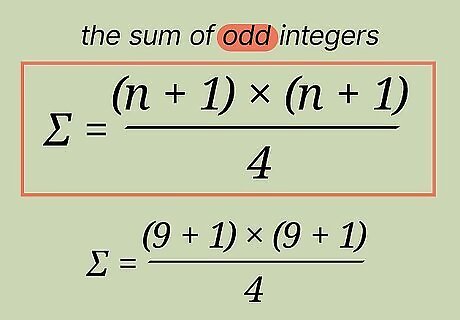
Define a formula to find the sum of odd integers. If the problem asks you to find the sum of only the odd integers, you'll need to find n {\displaystyle n} n first. To find n {\displaystyle n} n, add 1 to the highest number of the sequence. Then use it in this formula: sum = ( n {\displaystyle n} n+1)∗( n {\displaystyle n} n+1)/4. For example, to add the odd integers from 1 to 9, add 1 to 9. The equation will now look like 10∗(10)/4. Once you've worked the equation, you'll get 10∗(10)/4 to equal 25.


















Comments
0 comment